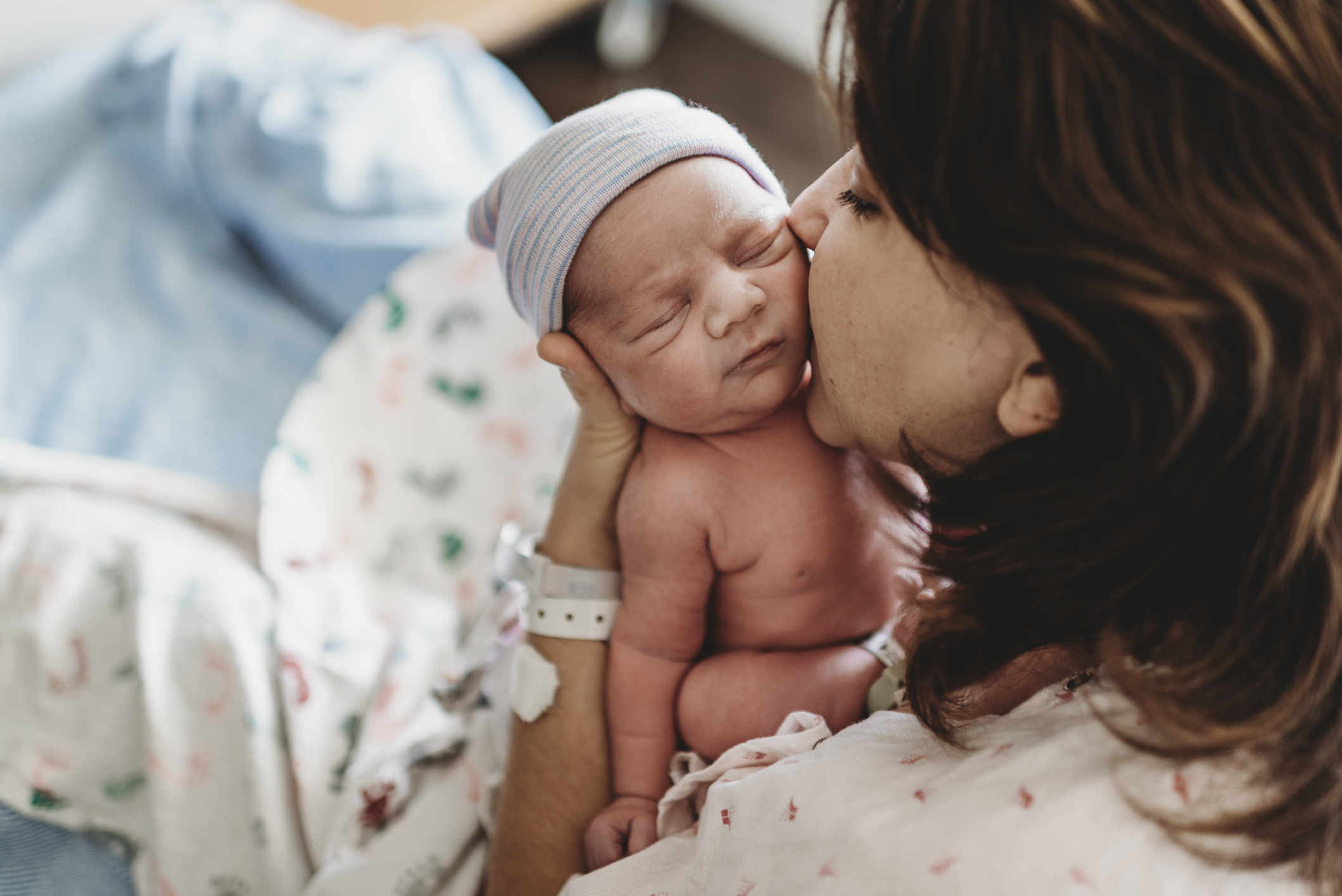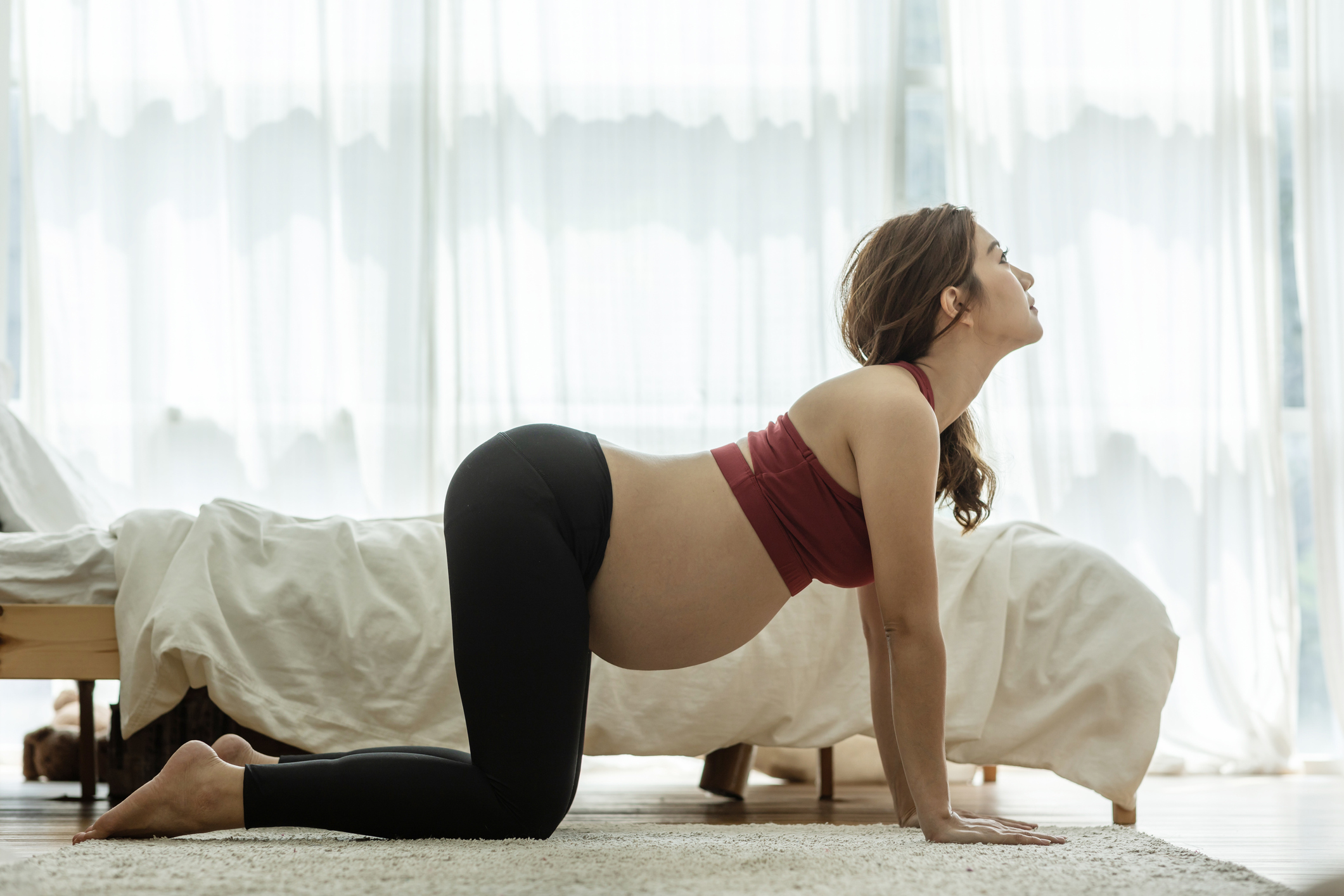Early signs of labour: How to tell if your baby is coming
Do you know how to spot the signs of labour from the very first twinge?

Why won't that niggling backache just go away? We look at the early signs that might mean that you're going into labour.
You can't predict exactly when you're going to go into labour when you're pregnant, but you can keep an eye out for signs of labour. Very early signs can begin up to a week before you give birth, so you can prepare yourself for the impending arrival.
Just as every labour is different, every woman's experience of the lead-up to labour varies. Some women don't notice any warning signs, while others have all the symptoms and realise that labour isn't far away. For most women, however, things start off slowly and build up until labour finally arrives.
What are the signs of labour to look out for? Make sure you read our guide on everything you need to know about spotting labour signs, including:
How do I know if labour has started? What is false labour What are signs of labour? Lower backache and feeling the baby has 'dropped' Contractions in early labour What happens when your waters break Is diarrhoea, vomiting and passing wind a sign of labour? Nesting in early labour What is a ‘show’ as a sign of labour When should to call the midwife
How do I know if labour has started?
You may experience some of the following early signs of labour up to a week before your labour starts. However you may not experience all of them, so don't feel like you have to tick everything on the list.
Do not worry if you've gone past your 'due date'. If you've had a healthy pregnancy, then your baby will arrive when it's good and ready. Whilst there are ways you can induce labour naturally, studies show that first-time pregnancies most often happen up to nine days past the 'due date'.
Parenting advice, hot topics, best buys and family finance tips delivered straight to your inbox.
If you've had a healthy pregnancy, try not to become anxious about every twinge: you're better off relaxing and allowing nature to take its course. Once you really are in labour, you will most certainly know about it.

What is false labour?
The long latent phase, or false labour as it's often unhelpfully called, is when your body begins to show signs of labour and then eases off again. This is perfectly natural, and nothing to become disheartened about.
"It’s normal for labour to start slowly and build up gradually over a few days in a ‘stop start’ way," says Milli Hill founder of the Positive Birth Movement and author of the bestselling Positive Birth Book. "But sometimes this can worry people if they've seen dramatic births on TV where it’s all a chaotic emergency from the very first contraction!
"Sometimes labours that can’t get going are due to the baby being in a difficult position, but more often than not it’s just the body getting ready, like an orchestra tuning up before the big concert. If this happens to you, just try to relax and enjoy it. Get plenty of rest, eat well or get out in nature. Follow your body’s lead; if you feel like walking, walk, and if you feel like resting, rest. It’s a real gift to have a labour that starts slowly, as it gives you a chance to get mentally, emotionally and practically ready for what’s to come."
What are the first signs of labour?
Signs of labour starting are usually early indications that your body is preparing for birth. This includes the baby moving down and putting different pressure on your body, as well as hormonal changes necessary for birth to begin. Read our week-by-week pregnancy guide to understand how your body changes throughout pregnancy.
The most common signs that labour is on its way include:
- Feeling that the baby has 'dropped'
- Contractions or tightenings of the uterus
- Urge to nest
- Waters breaking
There is no one, definitive sign of labour. You may have one, all or none of the below before your labour journey begins. It is likely that you will experience some of the below, however. So if you're looking for signs of labour, here's what to expect:
Lower backache and feeling the baby has 'dropped'
Lower back pain is an early sign of labour. You might think that when labour is imminent that you'll have pains in your abdomen, but for some women, labour pain starts in their back. This could just be a dull ache, or a feeling of increasing pressure which is a good sign. Try to do some gentle stretches, or cat-cow yoga stretches on your hands and knees, to ease out that tension.

If you can suddenly breathe more easily it may be that your baby has dropped further down into the birth canal, which is a sign that the baby is preparing for birth. You'll also feel more pressure on your bladder, and need to go to the toilet more regularly.
Contractions in early labour
What is a contraction? A labour contraction is when the uterus muscles tighten and contract to open and widen the cervix. Contractions are also called a surge, rush or tightening to help birthing mothers maintain a positive mind-body connection.
Contractions build the muscle fibres up at the fundus, at the top of the womb, which creates a strong piston to move the baby down and through the birth canal. In hypnobirthing, you may hear the early stages of labour being described as the 'up stage', as contractions pull the muscles of the uterus up, which in turn opens and thins the cervix. This is followed by the 'down stage' once the cervix is fully dilated and the baby begins to descend the birth canal. Hypnobirthing practitioners recommend 'up' breath and 'down' breathing to help you navigate the contractions through this transition.
What do contractions feel like? Contractions feel like a tightening across your stomach and in your uterus. They move in a wave-like pattern through the uterus as the cervix begins to open and soften. Period pains are mild contractions, so they feel like stronger versions of those. In the first stage of labour, or the latent phase, you might feel irregular contractions. It can take several hours (or even days) before established labour begins with regular, strong surges.
What's the difference between Braxton Hicks and contractions?
You may have experienced some Braxton Hicks during your pregnancy, which is when the womb contracts. They are not 'real' contractions, but an indication that the body is getting ready. They may become closer together, more intense and more uncomfortable in the lead-up to labour.
Labour contractions are frequent and last longer than 40 seconds. When you're in full labour, contractions last about 30 to 90 seconds and come about five to 10 minutes apart. Braxton Hicks feel like contractions, but they are more irregular and don't follow such a fixed pattern or grow in intensity like true contractions.

Your waters will break as a sign of labour
Waters are the amniotic fluid inside the sac that protects the baby from infection or injury. When the baby is ready to be born, the sac breaks and the fluid leaves the body through your vagina. If you're leaking urine you should have some control over the flow. Also amniotic fluid smells different to urine. A single sanitary liner won't be able to absorb all the liquid.
Labour usually starts within 24 hours of your waters breaking, but it can take up to 48 hours for labour to start naturally after your waters break. On the other hand, for some women contractions start immediately after the waters break, which then grow in intensity until they're full-blown contractions.
What should you do when your waters break? If you think your waters have broken, or even if you're not sure, call your midwife or labour ward. They will determine whether you need to go to hospital. If your waters have broken early, you and your baby might be at risk of infection if you don't then go into labour. Your midwife may ask you to come into hospital.
Will my waters breaking hurt? No, breaking waters don't hurt. You might feel a pop and then a trickle or a gush of water. The liquid is clear and straw-coloured. If it's brown, green or any other colour you should contact your midwife as this could be a signal that the baby is in distress.
How much liquid is there when my waters break? Hypnobirthing Coach Annabel Hargrave says that "Sometimes water's breaking can be a trickle, sometimes it can be a gush. Interestingly women often think they are 'not in labour' until their waters break, which is not true. You can be in labour and your waters remain intact." This is called an 'en caul' birth. Either way, when your waters break it won't be a huge amount of water like you see in the movies.
Is diarrhoea, vomiting and passing wind a sign of labour?
This is thought to be because the body is clearing itself out in preparation for birth. You may also feel the need to go to the toilet more as the baby's head presses on your bowel as it moves down the birth canal. Yogabirth teacher and Hypnobirthing Coach Annabel Hargrave says that "The most common comment I get is a period-type pain or draggy discomfort. An upset stomach is quite typical too, as hormonal changes are asking the body to empty so some women can feel a bit sick.
Needing the toilet or passing wind can be a sign of labour coming. Sam Nightingale, clinical academic midwife at University Hospitals Coventry and Warwickshire NHS Trust and researcher at women’s health research charity, Wellbeing of Women advises: "Sometimes women experience loose stools in the early stages of labour. This can be associated with passing wind, but will not be experienced by everyone."
Nesting in early labour
Do you have an urge to tidy the house or cook up a storm? Pregnant women often have an urge to create a nice, safe home for their new arrival. This could be very practical, or it might feel more primal. But if you get this urge near your due date, it could be a sign that labour is on its way.

What is a 'show' as a sign of labour?
When you're pregnant the cervix is sealed by a plug of mucus to protect the baby. Birth is imminent when the plug releases from your cervix, perhaps with a bit of blood which is why it's also known as a bloody 'show'. Some women experience a show a few days before labour gets going and in some cases it's just a few hours before.
The plug is made of mucus, so it looks jelly-like and may be stained with a little blood or be brownish in colour. It could come away in one go, or in parts. you may notice it when you go to the toilet or on toilet paper after passing urine. If there's a lot of blood or the discharge is red, green or brown it could be a sign of complications. Call your midwife or your hospital straight away.
But, is white discharge a sign of labour? Yes, increased or thicker vaginal discharge can be a sign of labour. It might also be the mucus plug coming loose incrementally rather than all at once.
When should to call the midwife

If you think you're entering the early stages of labour, don't panic. Call your midwife or labour ward for advice. They will ask you a few questions and confirm whether you need to go in for a check-up. Even if they check you and send you home again, you'll be reassured that labour is progressing.
Lesley Gilchrist, Registered Midwife and Founder of My Expert Midwife, says: "It can be difficult to know when to call the midwife when labour begins, especially if it is your first baby. Labour is likely to continue more smoothly if you stay at home for as long as possible during the early stages. This is because hormones which help labour and birth progress work more efficiently when your body and mind are in a relaxed and comfortable environment.
"As an approximate guide, contractions should be coming around every three minutes and lasting around a minute. Although in women who have had a baby previously, the advice would be around every five minutes. Always call the midwife if you have any concerns such as baby’s movement patterns changing or bleeding.
"Do not worry about calling the midwife. They would much rather you contacted for advice rather than stayed at home becoming worried and anxious!"
Things to remember
Ultimately your baby will arrive when it's ready. You can try these natural ways to bring on labour, but if you've had a healthy pregnancy so far you might be better off resting and conserving your energy.
- Early signs of labour may be on and off again in a long latent phase. But do not be disheartened.
- Take time to rest and conserve your energy once you get any of the above signs of labour.
- You may not get all of the above signs before your labour begins.
- Carry on as normal
Anthonissa Moger, Founder of The Hypnobirthing Midwife and author of Holistic Hypnobirthing advises that "Early labour (0-4cm dilated) is often the longest part. The body is deciding whether to commit to going into labour and the cervix has to go soft and thin before it really starts to open — which is a big job to do!
"It is very common to have some niggles for a few days on and off. A good approach is to carry on as normal and try to relax and enjoy the last few days of pregnancy. All of the work your body is doing is valuable and you will get there."